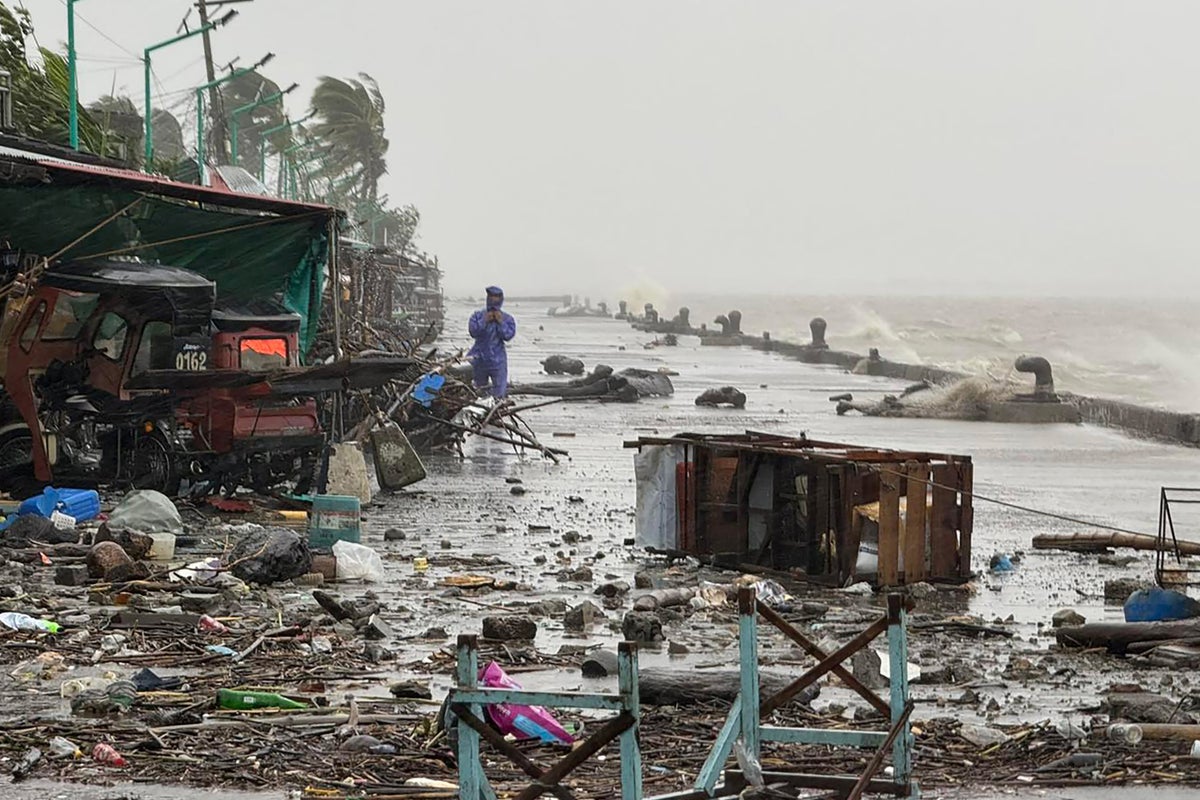Tropical Storm Bualoi (Opong) Death Toll Reaches 10 in Philippines
At least 10 people have died in the Philippines as of September 26, 2025, due to Tropical Storm Bualoi, known locally as Opong. The storm made landfall in Eastern Samar on September 25, before crossing into Masbate and sweeping through the Bicol region, leaving behind a trail of destruction. Thousands were displaced, already reeling from the impact of Super Typhoon Ragasa.
Storm Path and Intensity
Tropical Storm Bualoi made its initial landfall in San Policarpo, Eastern Samar, at 23:30 local time (LT) on September 25. The Philippine Atmospheric, Geophysical and Astronomical Services Administration (PAGASA) classified the system as a Severe Tropical Storm at landfall, with sustained winds of 65–90 km/h (40–55 mph) and gusts exceeding 130 km/h (81 mph) in exposed areas.
The Joint Typhoon Warning Center (JTWC) estimated Bualoi’s peak intensity at 111 km/h (69 mph) with a minimum central pressure of around 993 hPa near landfall. The system was moving west to west-northwest at 37–46 km/h, with rainbands extending 400–450 km (250–280 miles).
Casualties and Damage
As of September 26, 2025, 10 fatalities have been confirmed. Two villagers were killed after being pinned by a fallen tree and a collapsed concrete wall in Masbate province. Another drowned in the same province. Seven villagers reportedly died in Biliran province due to flash floods. There were also reports of widespread power outages, flooding, and minor landslides.
At least 13 fishermen from three central provinces remain missing after venturing out to sea before the storm's arrival. The governor of Masbate province has appealed for immediate assistance from the national government to clear debris, restore power, and reopen ports.
Evacuations and Warnings
According to the National Disaster Risk Reduction and Management Council (NDRRMC), nearly 433,000 people (about 120,888 families) were evacuated nationwide as of September 26. PAGASA also warned of storm surges up to 3 m (10 feet) in coastal areas. Villagers on the slopes of Mayon volcano in Albay province were evacuated due to possible volcanic mudflows.
Bualoi is the 15th tropical cyclone to affect the Philippines in 2025 and follows Typhoon Ragasa, which caused over 25 deaths in the Philippines and Taiwan earlier in September.
Future Trajectory
Bualoi is forecast to exit the Philippine Area of Responsibility (PAR) on September 27. Both PAGASA and JTWC expect the storm to regain strength over the West Philippine Sea, with a likelihood of reaching typhoon intensity while tracking west-northwest toward northern Vietnam.
PAGASA maintains warnings across affected provinces, urging vigilance against flooding, landslides, and coastal hazards. JTWC also forecasts Bualoi’s weakening from land interaction was temporary and that re-intensification is likely once the storm re-emerges over open waters.
 Visit the website
Visit the website






